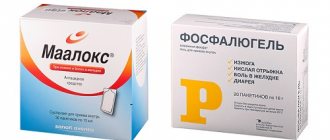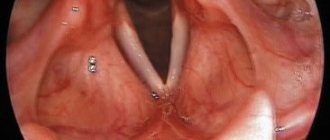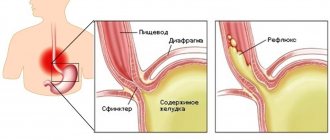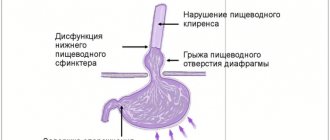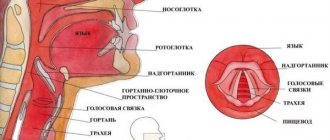Intestinal obstruction is a life-threatening pathology characterized by impaired passage of chyme (partially digested food) through the intestine. The reason for this may be various conditions that cause obstruction of the intestinal lumen, spasms, circulatory or innervation disorders. Timely access to a surgeon and establishment of an accurate diagnosis is crucial.
At CELT you can consult a surgeon.
- Initial consultation – 3,000
- Repeated consultation – 2,000
Make an appointment
Classification
The classification of intestinal obstruction is based on various factors. Accordingly, one or another treatment tactic is selected.
Depending on the cause of the pathological condition, the following types of disease are distinguished:
Dynamic intestinal obstruction (due to spasm or, conversely, decreased tone of the intestinal wall).
Mechanical, which is divided into forms:
- strangulation;
- obstructive;
- ischemic (vascular);
- mixed.
According to the level of localization of the process, the following types of obstruction are distinguished:
- high small intestinal;
- low small intestinal;
- colonic
By severity:
- partial;
- complete.
According to clinical signs:
- spicy;
- subacute;
- chronic course.
Stages of intestinal obstruction:
- It’s not for nothing that the stage of “ileus cry” bears this name. It is characterized by severe abdominal pain and lasts 2-12 hours.
- Intoxication is a period of “light” interval, when the pain syndrome subsides and intestinal peristalsis weakens. The feeling of better health is deceptive. The clinic is characterized by bloating, asymmetry of the abdomen, lack of stool and gas.
- The terminal stage is characterized by poor circulation and the development of peritonitis (inflammation of the peritoneum). It usually occurs 36 hours after the onset of the disease.
Treatment of intestinal obstruction in adults
In order to promptly begin treatment for this pathology and determine the correct tactics for patient management, it is necessary to correctly and quickly make a diagnosis. It is difficult to do this at home, so hospitalization in a hospital is required.
Good to know
How to reduce the risk of developing hemorrhoids during pregnancy?
Diagnostics
After a preliminary examination by emergency physicians and the assumption that there may be intestinal obstruction, the patient is usually sent to a surgical hospital. Your emergency room doctor may recommend urgent blood tests to check your liver and kidney function.
Diagnosis usually begins with a physical examination. The obstruction can cause a lump in the abdomen that the doctor can feel when palpating. The doctor will also ask questions and review the person's medical history.
During the examination, the surgeon may use a stethoscope to check the person's bowel movements. The absence of regular characteristic bowel sounds (peristalsis or gurgling) or unusually quiet sounds may indicate a bowel obstruction. Depending on individual cases, your doctor may recommend further tests. These may include:
- blood tests to check the level of electrolytes, biochemical parameters, and the number of blood cells (especially white blood cells);
- endoscopy, in which the doctor uses a special camera to look inside the intestines;
- computed tomography;
- Contrast X-rays—Doctors may give a liquid substance called contrast through an enema, which allows the intestines to be seen more clearly during imaging studies.
Modern methods of treatment
The management of a patient with intestinal obstruction depends on the cause and severity of the obstruction. Complete mechanical obstruction usually requires surgery to remove the obstruction. Most cases of dynamic intestinal obstruction require medical intervention, including possible surgery.
Treatment options for intestinal obstruction may include:
Medicines. Opioids can cause constipation and intestinal spasms. In this case, laxatives and stool softeners, as well as opioid antidotes, will help.
Observation. The accumulation of stool, or ileus, may need to be monitored for a few days and will resolve over time. During this time, people should limit food and drink to prevent further accumulation of feces. Doctors may give fluids intravenously to keep the body hydrated.
Nasogastric tube. This is a narrow tube that is inserted through the nose and into the stomach. Through it, liquid and gas stagnant in the stomach are removed, relieving pressure on it. This relieves pain and vomiting.
Operation. Surgeons can remove blocked or damaged areas of intestine. In cases of IBD, stricturoplasty may be required. The surgeon will widen the narrowed section of intestine by cutting and stitching.
Therapeutic enema. The nurse or doctor administers medicine or tap water into the intestines to try to relieve blockage due to excessively dry stool, which can happen with severe constipation.
Medicines may help relieve the discomfort caused by a bowel obstruction. Treatment may include:
- anti-nausea medications to prevent vomiting;
- pain reliever;
- antibiotics to fight bacterial infection.
On a note!
Constipation in adults: why it occurs and how to treat it
Causes of intestinal obstruction
There are many reasons that contribute to the occurrence of intestinal obstruction. Thus, its spastic form develops as a result of painful contraction of the wall caused by helminths, foreign bodies, abdominal injuries, acute inflammation of the pancreas, renal and biliary colic, pleuropneumonia, pneumothorax and other pathologies. The development of the spastic form can also be caused by various lesions of the nervous system (trauma, pathologies of the spinal cord, strokes, etc.) and circulatory disorders.
Paralysis of the intestinal wall, characteristic of the paralytic form of the disease, develops as a result of peritonitis, various poisonings, including food poisoning, after operations under anesthesia, etc.
Obstructive intestinal obstruction is caused by various kinds of obstacles to the movement of chyme. These can be fecal stones, gall bladder stones, helminths, foreign bodies, tumors growing both inside the intestine and compressing the wall from the outside.
The etiology of strangulation intestinal obstruction lies not only in mechanical compression of the intestine, but also in compression of the mesenteric vessels. This occurs as a result of the development of volvulus, strangulation hernia, intussusception, the formation of intestinal loops, which can be facilitated by a long mesentery of the intestine, scars and adhesions, rapid weight loss, severe overeating after fasting and other pathological conditions. Vascular intestinal obstruction develops due to acute disruption of mesenteric circulation as a result of thrombosis or embolism.
What is intestinal obstruction
Obstacles along the path of food masses cause accumulation of food in a certain area of the intestine, stagnation of gastric juice, and excessive formation of gases and liquids. As symptoms continue to progress, pressure within the intestinal lumen increases. This can lead to rupture of the intestinal wall with effusion of masses. What was in front of the blockage area can enter the abdominal cavity, irritate the peritoneum and spread bacteria, causing the development of peritonitis. This condition can be fatal.
We'll look at the symptoms and causes of bowel obstruction in adults, as well as how doctors can treat the condition and what people can do to prevent it from occurring.
Clinical manifestations
Manifestations of the disease develop quickly, and it is extremely important to diagnose it in a timely manner.
Characteristic clinical symptoms of intestinal obstruction can be identified:
- severe pain;
- delayed bowel movement (lack of stool and gas);
- vomit;
- flatulence.
Delayed bowel movements and lack of natural gas release are another sign characteristic of colonic obstruction and are accompanied by bloating.
Abdominal pain is a mandatory symptom of the disease. The pain syndrome is always pronounced and marks the beginning of the development of the disease; it can be constant or cramping in nature with a gradual increase in intensity, up to the development of painful shock. The patient takes a characteristic body position that brings relief - he presses his legs to the anterior abdominal wall.
Vomiting, which does not bring relief, is also characteristic of this pathology, however, you should pay attention to some features of this symptom. Repeated vomiting at the very beginning of the disease may indicate that the problem is localized in the small intestine. Pathology located in the lower sections is accompanied by infrequent vomiting, which appears at the stage of intoxication.
If the patient is not helped at the onset of the disease, intoxication occurs, the clinical signs of which are:
- increased body temperature;
- development of peritonitis;
- increased frequency of breathing (shortness of breath);
- increased heart rate (tachycardia);
- sepsis;
- urinary disturbance;
- dehydration.
In the terminal stage of the disease, death can occur.
Symptoms of intestinal obstruction in adults
Although symptoms can vary greatly from person to person, in general, symptoms of intestinal obstruction can include a sudden increase in abdominal volume, severe intestinal cramps, nausea and severe bloating. Intestinal obstruction can be a painful and excruciating condition that progresses without assistance and timely surgery.
Additional symptoms include:
- frequent or uncontrollable vomiting with constant nausea;
- diarrhea;
- severe bloating in one part of the abdomen;
- constipation up to several days;
- strong and sharp spasms, acute pain;
- decreased appetite;
- a sharp increase in the size of the abdomen.
And all this happens against the background of a complete absence of gas and stool. The patient cannot go to the toilet. It is important to note that vomiting and diarrhea are the first signs of intestinal obstruction; contents drain below the area of obstruction. Recognizing these symptoms means a person can seek treatment before the condition progresses to severe complications.
If your temperature increases further after some of these symptoms appear, you should consult a doctor. This may be a sign of intestinal perforation.
To the point
How to treat hemorrhoids in men: pills, diet or surgery
Diagnostics
Diagnosis of the disease begins first of all with an objective medical examination of the patient. Tympanitis is noted by percussion along with a dull sound; characteristic noises are heard on auscultation at the onset of the disease (with increased peristalsis) and with the progression of intestinal obstruction (when there is no peristalsis). By palpation, you can determine a distended intestinal loop; in the last stage of the disease, tension in the muscles of the anterior abdominal wall. Rectal and vaginal examination during examination provides information about the presence of a tumor formation blocking the intestinal lumen.
An objective examination only presupposes a diagnosis; it is finally confirmed by laboratory and instrumental examination methods:
- General blood test (an increase in the level of leukocytes is detected, indicating an inflammatory process).
- Blood chemistry.
- Plain X-ray of the abdominal cavity (a characteristic feature is the detection of Kloiber's cups) and X-ray with contrast to diagnose the level of the lesion.
- Colonoscopy (if indicated!) and/or irrigoscopy (x-ray of the colon) examines the large intestine, and sometimes allows one to identify the cause of intestinal obstruction.
- Ultrasound of the abdominal organs and kidneys is prescribed when the presence of tumors or inflammatory foci is suspected, however, visualization is often difficult due to severe pneumatization.
In difficult situations, laparoscopic surgery is performed, which makes it possible to clarify the diagnosis and eliminate the cause of the disease.
Intestinal obstruction is differentiated from acute appendicitis, perforated ulcer, renal colic and other acute diseases of the abdominal organs.
Causes of intestinal obstruction in adults
There is no single reason for all patients without exception. Given the fact that there is at least small intestinal and colonic obstruction, there are many possible reasons for the development of pathology.
In addition, mechanical and dynamic obstruction is possible, with the development of complications. Accordingly, the reasons may be mechanical or non-mechanical.
Mechanical causes are various physical obstacles that completely stop or greatly limit the flow of food gruel through the intestines. These include:
- adhesions or fibrous tissue that may develop after abdominal or pelvic surgery;
- diverticulitis (formation of pouches in the intestinal lumen);
- a foreign object that entered the intestine when swallowed;
- gallstones, although this is a rarer cause of obstruction;
- hernia of the anterior abdominal wall, groin, navel;
- intestinal infections;
- inflammatory bowel diseases (IBD);
- intussusception, when a segment of the intestine is pushed through and is sucked into the next segment, which leads to its collapse, compression;
- tumors of the intestine or neighboring organs;
- torsion of parts of the intestine.
Some call non-mechanical obstructions dynamic intestinal obstruction, or paralytic. This happens when something, various external influences disrupt the functioning of the entire digestive system.
Digestive system. Illustration: Shuttetstock
The large and small intestines move in concert, contracting rhythmically. If something interrupts this process, a non-mechanical obstruction may occur (spasm, intestinal paralysis, impaired movement and stoppage of contents). If a doctor can find and treat the cause, then a paralytic ileus is usually considered a short-term problem and can be resolved without surgery. However, some long-term influences or chronic diseases can cause long-term non-mechanical obstruction.
Causes of non-mechanical intestinal obstruction include:
- abdominal or pelvic surgery with damage to nerve fibers;
- diabetes;
- electrolyte imbalance;
- hypothyroidism;
- Hirschsprung's disease, a condition in which nerve cells at the end of the intestine are missing;
- infections;
- some nerve and muscle disorders such as Parkinson's disease;
- opioid drugs.
Our doctors
Lutsevich Oleg Emmanuilovich
Chief Surgeon of CELT, Honored Doctor of the Russian Federation, Chief Specialist of the Moscow Department of Health in Endosurgery and Endoscopy, Corresponding Member of the Russian Academy of Sciences, Head of the Department of Faculty Surgery No. 1 of the State Budgetary Educational Institution BPO MGMSU, Doctor of Medical Sciences, Doctor of the Highest Category, Professor
43 years of experience
Make an appointment
Prokhorov Yuri Anatolievich
Surgeon, head of the surgical service of CELT, candidate of medical sciences, doctor of the highest category
33 years of experience
Make an appointment
Fedorova Elena Vladimirovna
Surgeon, Candidate of Medical Sciences, doctor of the highest category
22 years of experience
Make an appointment
Gordeev Sergey Alexandrovich
Surgeon, Candidate of Medical Sciences, doctor of the highest category
42 years of experience
Make an appointment
Treatment tactics
At the first symptoms of the disease, the patient must be immediately hospitalized in a hospital. Before being examined by a surgeon, it is prohibited to take painkillers or any other medications, or to cleanse the stomach and intestines, so as not to blur the clinical picture and cause harm.
If intestinal obstruction is diagnosed in its initial stage, conservative treatment methods can be used:
- Emptying the stomach and intestines from food and feces using probing and siphon enema.
- Taking antispasmodics in the presence of spasms or drugs that stimulate peristalsis in case of intestinal paresis.
- Intravenous drip infusions of saline solutions to achieve water-electrolyte balance.
- Colonoscopy for diagnostic and therapeutic purposes.
If a conservative approach to treatment does not eliminate the disease, it is necessary to think about mechanical obstruction or the development of complications and resort to surgical intervention.
The following surgical treatment options are used:
- unraveling intestinal loops;
- cutting adhesions;
- hernia repair in the presence of a hernia;
- excision of a necrotic area of the intestine;
- the application of a colostomy to remove feces outside (in case of malignant neoplasms and the impossibility of anastomosis).
After the operation, drug correction is carried out, which, as a rule, includes antibiotic therapy, detoxification measures, restoration of peristalsis, etc. The main goal of treatment is to save the patient’s life and prevent possible complications that may develop if the disease is not diagnosed and treated in a timely manner. The most life-threatening consequences are pain shock, sepsis and peritonitis.
Preventive actions
The effectiveness of treatment depends on the etiology of the disease and the qualifications of the surgeon, because accurate diagnosis and timely and correct treatment measures minimize the likelihood of complications. It is also necessary to take into account the age of the patient: older patients have an increased risk of complications.
Prevention is aimed at treating diseases that cause intestinal obstruction:
- control of helminthiasis;
- timely diagnosis and removal of tumors;
- prevention of adhesions;
- preventing traumatic injuries;
- healthy eating;
- the right way of life.
The multidisciplinary clinic CELT has a powerful diagnostic and treatment base and experienced specialists of the highest level.
Our services
The administration of CELT JSC regularly updates the price list posted on the clinic’s website. However, in order to avoid possible misunderstandings, we ask you to clarify the cost of services by phone: +7
| Service name | Price in rubles |
| Appointment with a surgical doctor (primary, for complex programs) | 3 000 |
| X-ray of the abdominal cavity (survey) | 2 400 |
| Diagnostic laparoscopy | 40 000 — 60 000 |
All services
Make an appointment through the application or by calling +7 +7 We work every day:
- Monday—Friday: 8.00—20.00
- Saturday: 8.00–18.00
- Sunday is a day off
The nearest metro and MCC stations to the clinic:
- Highway of Enthusiasts or Perovo
- Partisan
- Enthusiast Highway
Driving directions

